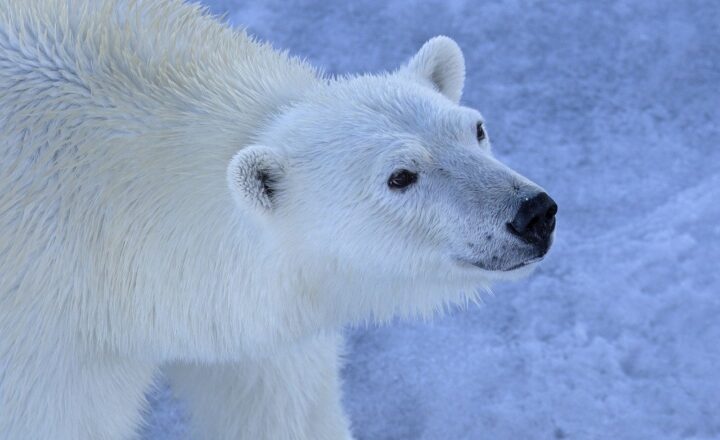The Untold Truth of Wildlife Conservation: What It Takes to Save Our Planet
November 18, 2024

Wildlife conservation has long been a hot topic of discussion, yet many people remain unaware of the intricate layers that define this essential field. Beyond the surface narratives of saving cute animals and pristine habitats lies a complex reality that requires dedication, collaboration, and a multifaceted approach. In this article, we will delve into the untold truths of wildlife conservation, exploring the strategies, challenges, and the profound importance of safeguarding our planet’s biodiversity.
1. The Importance of Biodiversity
Biodiversity refers to the variety of life on Earth, encompassing different species, genetic variations, and ecosystems. It is vital for a multitude of reasons:
- Food Security: Diverse ecosystems contribute to global food security by providing a variety of plants and animals for consumption.
- Ecosystem Services: Healthy biodiversity play crucial roles in nutrient cycling, pollination, and climate regulation.
- Cultural Significance: Many cultures and communities are intricately tied to their local wildlife and ecosystems, influencing traditions, livelihoods, and worldviews.
This highlights that conservation efforts are not solely about individual species but about maintaining the richness of life itself, which supports our survival.
2. The Diverse Approaches to Conservation
While the imagery of park rangers and wildlife reserves may come to mind, wildlife conservation encompasses a broad range of strategies, including:
- Protected Areas: Establishing national parks and wildlife sanctuaries helps safeguard habitats from human encroachment and exploitation.
- Community-Based Conservation: Involving local communities in conservation efforts fosters stewardship and ensures that initiatives align with the needs of the people living near critical habitats.
- Restoration Ecology: This involves restoring degraded ecosystems to their natural state, increasing biodiversity and ecosystem resilience.
- Species Recovery Programs: Targeted efforts to revive endangered species populations through breeding programs and habitat protection initiatives.
- Legislation and Policy: Enacting and enforcing laws aimed at protecting wildlife and their habitats, such as the Endangered Species Act, plays a vital role in conservation success.
Each approach serves a purpose, and often, a combination of methods is most effective in ensuring the long-term sustainability of wildlife and ecosystems.
3. The Role of Technology in Conservation
Technological advancements have transformed wildlife conservation efforts. From satellite imaging to artificial intelligence, technology plays a critical role:
- Monitoring Populations: Drones and camera traps allow conservationists to monitor wildlife populations and their movements without disturbing their natural behaviors.
- Data Analysis: Big data analytics helps consolidate vast amounts of information on biodiversity and ecosystem health, leading to more informed decision-making.
- Community Engagement: Social media platforms and mobile apps promote conservation awareness, fostering community engagement and action.
As technology continues to evolve, its role in conservation will become increasingly indispensable, streamlining efforts and maximizing impact.
4. The Economic Aspects of Conservation
Wildlife conservation is often framed as a moral or ethical imperative, but it also has substantial economic implications:
- Ecotourism: Protected areas attract millions of tourists, generating significant revenue that can be reinvested into conservation efforts and local economies.
- Sustainable Industries: Promoting sustainable agricultural and fishing practices not only conserves resources but also supports long-term economic growth and community resilience.
- Restorative Economy: Investing in the restoration of habitats offers jobs, and revitalizes local economies while benefiting biodiversity.
Understanding these economic dimensions enables policymakers and stakeholders to advocate for conservation as an investment in the future, not merely as a cost.
5. The Human Factor in Conservation Success
Wildlife conservation cannot succeed without considering the people affected by its initiatives. Engaging local communities is key:
- Building Relationships: Establishing trust and mutual respect with local communities fosters collaboration and supportive networks for conservation efforts.
- Education and Awareness: Elevating knowledge about wildlife conservation extends beyond local communities; it touches schools, businesses, and global citizens, creating space for collective action.
- Empowerment: Providing locals with tools and resources not only enhances their capacity to protect local wildlife but also establishes a sense of ownership over natural resources and habitats.
Recognizing the human dimension of conservation allows for a holistic approach where ecology and community intersect harmoniously.
6. Challenges Facing Conservation Efforts
Despite the ongoing efforts, wildlife conservation faces numerous challenges:
- Habitat Destruction: Urbanization, deforestation, and agricultural expansion continue to threaten natural habitats and fragment ecosystems.
- Climate Change: Alters habitats, negatively impacting species and their migration patterns, often leading to extinction.
- Poaching and Illegal Trade: Wildlife trafficking represents a lucrative, ongoing threat, leading to drastic declines in species populations.
- Lack of Funding: Many conservation projects struggle with inadequate funding, which hampers their effectiveness and sustainability in the long run.
Addressing these challenges requires stringent international collaboration, activism, and funding commitment from diverse stakeholders.
Conclusion: A Call to Action
In conclusion, wildlife conservation represents a crucial investment in our planet’s future. The protection of biodiversity is intrinsically linked to human health, economic sustainability, and the well-being of the Earth itself.
As individuals, we can contribute by:
- Supporting conservation organizations through donations or volunteer work.
- Educating ourselves and others about the importance of protecting wildlife.
- Adopting sustainable practices in our daily lives to lessen our ecological footprint.
By recognizing the untold truths of wildlife conservation and engaging actively in efforts to protect our planet, we can forge a future where both wildlife and humanity thrive together. Together, we have the ability to make a significant difference in preserving the rich tapestry of life on Earth.







